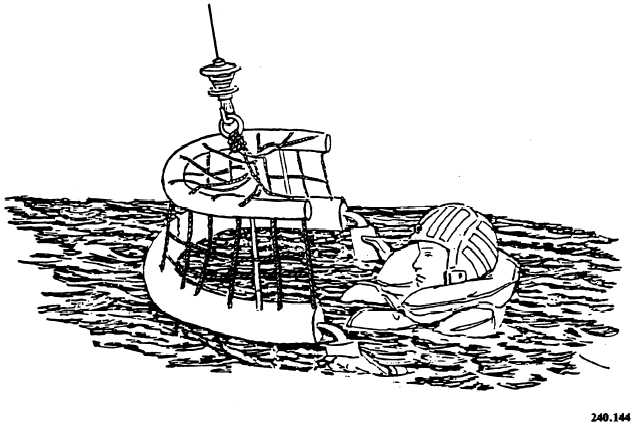4. Places one arm across the net to ensure that
the survivor cannot fall out and signals the
aircraft when ready for hoisting. After reaching
the helicopter, the crewman hooks up the safety
strap from the rescue net to the decking of the
helicopter. The crewman assists the survivor
into the helicopter.
Rescue Net (Swimmer-Assisted,
Multiple Rescue)
The following is a step-by-step procedure for
the swimmer to-use when performing multiple
rescues:
1. Places the rescue net opening directly in
front of the survivors without disconnecting it
from the rescue hook.
2. Has the survivors swim into the rescue net.
W A R N I NG
The survivors must not attempt to
g e t o u t o f t h e r e s c u e n e t u n t i l t h ey
are directed by the crewman.
3. Ensures that the survivors are completely
in the rescue net with their legs inside. The
survivors are hoisted to the helicopter. The
crewman hooks up the safety strap from the
rescue net to the decking of the helicopter. The
crewman assists the survivors into the helicopter.
SEARCH AND RESCUE
(SAR) COMMUNICATION
During rescue operations, it is essential that
you use standardized communication procedures.
Voice, hand, and signal communications are
important in aiding a rescue. The primary means
of communication is the survival radio carried by
the aircrewman or supplied with the survival
equipment. Instructions for using the radio are
embossed on the radio case, and all crewmen must
be familiar with the radio operations.
Radios
Depending upon available stock levels, air
commanders may direct a particular radio to be
used. If no particular type of survival radio is
Figure 5-36.—Survivor entering the rescue net.
5-27


